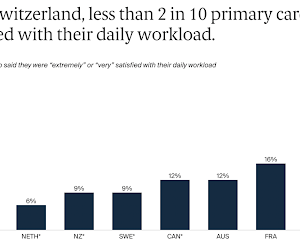Turnover is killing healthcare from the inside

The healthcare industry is facing a crisis from within that threatens its very foundation. High turnover rates among healthcare professionals, particularly in hospitals, are presenting significant challenges to the quality, consistency, and efficiency of care provided to patients. According to the 2023 NSI National Healthcare Retention & RN Staffing Report, the turnover rate for hospitals stands at an alarming 22.7%. This figure not only reflects the instability within the healthcare workforce but also underscores the immense pressure and dissatisfaction that many healthcare professionals experience.
“Healthcare turnover is not just a staffing challenge; it’s a mirror reflecting the systemic pressures and unprecedented demands placed on our healthcare professionals,” says Brian White, CRO, Co-founder at DoorSpace.
The Startling Reality of New Hire Retention
The issue of turnover is further compounded when examining the retention rates of newly hired healthcare professionals. The same report indicates that a staggering 39.8% of all new hires leave their positions within a year. This high rate of attrition among new employees suggests significant challenges in the onboarding, integration, and satisfaction of healthcare workers in their new roles. The implications of such turnover are far-reaching, affecting not just the morale of the remaining staff but also the financial health of healthcare institutions, which must continually invest in recruiting, hiring, and training new employees.
The Brief Tenure of Healthcare Employees
Further exacerbating the turnover crisis is the finding that 58.7% of employees who left their positions had spent less than two years in their role. This short tenure indicates a deep-seated issue within the healthcare employment ecosystem, where professionals feel compelled to leave their positions prematurely, often due to burnout, lack of support, or better opportunities elsewhere. The brevity of employment spells trouble for healthcare organizations, leading to a cycle of perpetual recruitment and loss of institutional knowledge and experience, which are critical for delivering high-quality care.
Analyzing the Underlying Causes
The high turnover rates in healthcare are symptomatic of deeper, systemic problems within the industry. Factors such as emotional and physical burnout, inadequate staffing levels, lack of professional development opportunities, and unsatisfactory compensation and benefits have all been cited as contributing factors. Additionally, the COVID-19 pandemic has intensified these challenges, placing unprecedented stress on healthcare workers and further accelerating turnover rates.
The Impact on Healthcare Delivery
The consequences of high turnover in healthcare are manifold. Patients may experience decreased quality of care due to the constant changing of healthcare providers, which can lead to a lack of continuity in patient care and erode patient-provider trust. For healthcare organizations, the financial strain of addressing turnover, through both direct costs like recruitment and training and indirect costs such as decreased productivity and morale, can be substantial. The remaining staff often face increased workloads and pressure, potentially leading to further dissatisfaction and turnover.
“The unending cycle of staff turnover will inevitably send ripples throughout the …read more
Source:: Social Media Explorer










